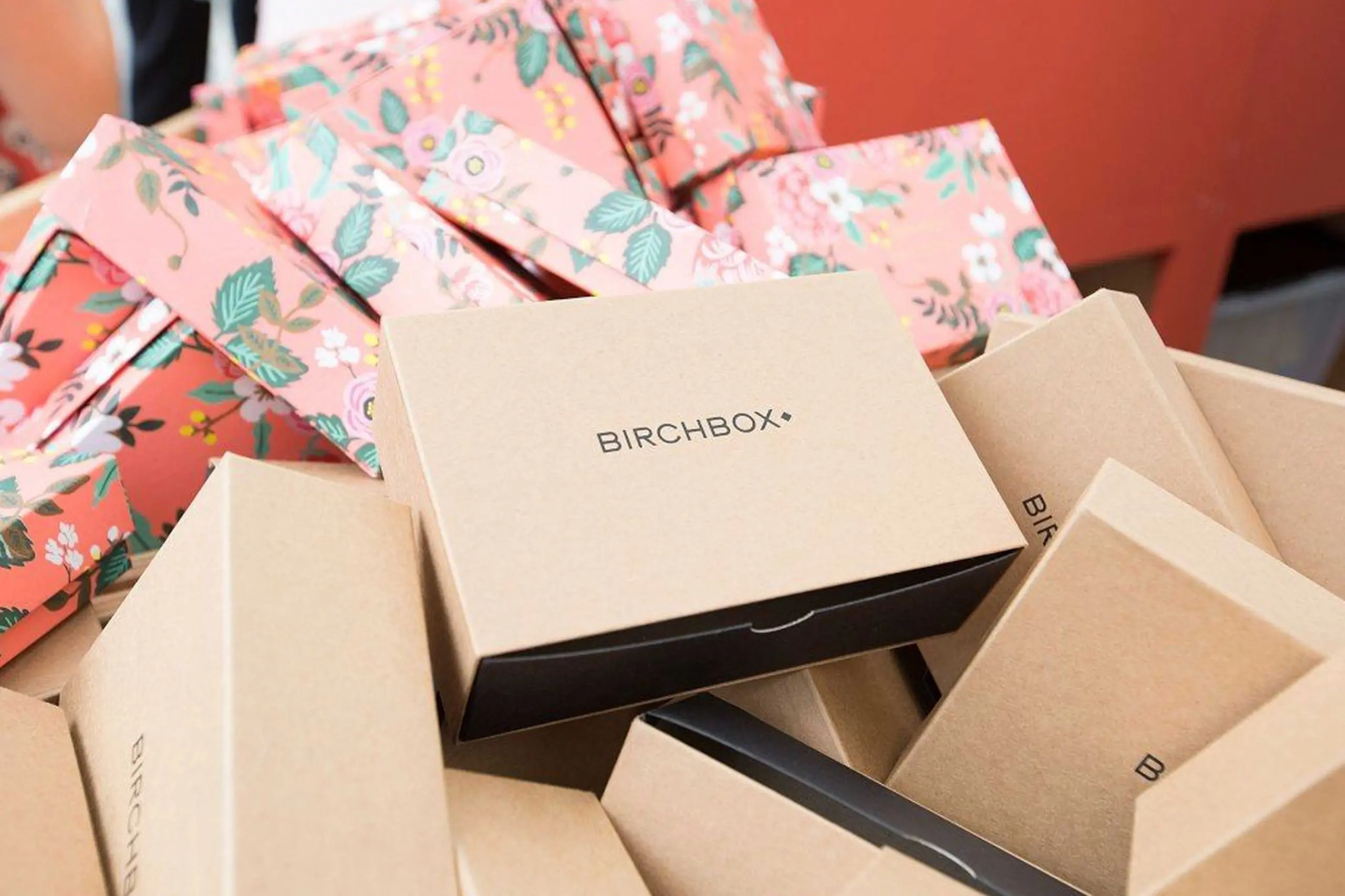
The Future of Sales? Socially Distanced E-Commerce and Keeping Customers Safe
Click, scroll, buy, repeat. If that mantra seems to resonate with you and your consumer behaviors over most of 2020 (and now into 2021), then you already know a thing or two about e-commerce. But if you’re on the flip side of the shopping cart trying to create a successful e-commerce brand in a socially distanced world, things are a little more complicated. So, is e-commerce the future of most sales? With online ordering on the rise, e-commerce becoming global, and mobile making things more convenient, we think so.
E-commerce, defined
A quick refresher if you need it: e-commerce is the buying and selling of things via the internet. It replaces traditional brick and mortar companies with fully digitized shopping experiences. Big players like Amazon and Alibaba have practically made their own sub-category within e-commerce since their inception, but this type of business has been around slightly longer.
In 1994, the first online sale was recorded through NetMarket.com when a man sold a Sting CD to his friend. Today, e-commerce companies run the gamut from business to consumer, business to business, consumer to consumer, and consumer to business. These four main categories are further broken into types such as retail, wholesale, subscription, dropshipping, and crowdfunding.
How social distancing is changing e-commerce
Although e-commerce is already a few decades old, 2020 was a banner year for it––with no signs of stopping in the new year. Stay-at-home orders and increased social distancing have changed this business type’s frequency and urgency and forced many brands to make a pivot or strengthen their already-established ecommerce strategies.
According to recent data, there’s been a 40 percent “increase in eCommerce since the state of emergency was declared on March 12.” And it’s estimated that by 2040, 95 percent of all purchases will be made online. With the way the trend is going and the continued social distance rules, it makes sense for brands to consider a complete switch to online brands or complementary brands to in-person experiences.
If you need more convincing: “Social distancing will be the norm for the foreseeable future, and customers will turn to companies that can deliver online.” However, this is not to say that e-commerce brands are not impervious to the impact of COVID. Some, like online clothing retailers, experienced a drop in sales at the beginning of the pandemic. And others saw dips and peaks since then. Essentially, it’s not a magic fix for your brand. If you choose to switch to online sales, you will still need to do your research.
However, it’s important to note the trends. Since March, e-commerce has changed in the following ways:
It’s become increasingly global
Companies have started to ship worldwide with more frequency, which drastically expands and changes the target markets online brands can hit. Before the pandemic, this growth was obvious in places like Asia and Latin America. Now, “there’s a ton of opportunity to pivot and appeal to markets where your product may have less competition and more opportunity.”
It’s become more mobile and more convenient
Consumers are no strangers to their phones, especially when it comes to convenient ordering. But social distancing has made mobile apps, mobile payments, and social commerce more relevant and accessible than ever. Things like progressive web apps (PWAs) are also gaining traction and creating more user-friendly web stores. Even more telling? It’s predicted that over half of online sales in 2021 will happen on mobile.
It’s more permanent than ever
Perhaps the biggest change that social distancing has made to e-commerce is its permanence. More than 75 percent of survey respondents said they will continue their online shopping habits long after lockdown and social distancing measures are gone. E-commerce is here to stay.
What makes for a successful e-commerce business?
Let’s say you started 2019 with a fairly successful wellness shop and studio. You had just expanded to a few more brick and mortar locations on the West Coast with plans for more. Enter the pandemic. You had a choice: shut down and take the L or adapt to your consumer’s needs. So, you bucked up, did your research, and came back with a fully operational e-commerce site that offered everything from at-home meditation kits to online yoga and pilates classes.
If the above scenario is any indication, now is the time to be nimble. Whether you’ve always been an e-commerce business, are just looking to begin one, or need to change your entire business plan, the following can set you up for success in 2021 and beyond.
Focus on the user (and user experience)
The stats on mobile online shopping usage are very telling: users want their shopping convenient and enjoyable. A huge disadvantage of online shops is their intangibility. It’s just not the same thing as browsing through a store with all of your senses engaged. Online stores can combat this by “offering appropriate pricing, giving free shipping, and making the checkout process easy with simplified shopping carts.”
It’s equally important to beef up your mobile and desktop experience. Make your site simple, easy-to-use, unique, and engaging. Integrate things such as videos, animated images, and games. You should also test out different design experiences and see which land with your customers. Plus, an improved website allows you to rebrand in other areas and launch a rebranding campaign to go along with it and attract new customers.
Shore up your SEO
E-commerce’s increasing popularity in the wake of 2020 is going to make the online competition more fierce. SEO can help your brand stand out from the competition and continue to rank high on Google. Things like doing keyword research, implementing SEO on the backend with meta-data, and regularly updating your blog with unique content can help bring high quality to your site again and again.
Adapt to mobile and work social
The increased time spent at home and socially bored makes for a lot of mobile usage. You can make sure your brand is something customers turn to by creating user-friendly apps and enticing social campaigns. The more your audience is talking about your brand, the better. You can achieve this with “things like product reviews and testimonials” as well as follow buttons and social icons. All of which helps the conversion funnel.
Stay transparent
Without the tangibility of a traditional store, your customers have to rely on other cues to assess your viability. Think of it this way: if you walk into a store and get a this-is-a-scam vibe, it’s likely because of visual cues. For websites, many that are seemingly legitimate are actually scamming customers. That’s where transparency comes in. Building a legitimate, trustworthy brand requires transparency in how people can contact you, what your brand offers, and why. Other important features? Detailed descriptions, linked social accounts, and competitive pricing. And just because you operate solely online doesn’t mean you should shirk on excellent customer service––in fact, it’s more important than ever.
Define your core purpose, but evolve
Online brands might think they can get away with only a quick website and fast checkout process, but the overall brand still matters. To keep customers coming back, you have to outline your brand values, goals, and purpose clearly. Put more simply: “deviating from your brand hurts your message.” If your social, website, packaging, and customer service align with your brand messaging, customers won’t even miss the in-person experience. And if this year has taught brands anything, it’s to evolve and adjust. Adapt to changes in technology, trends, and taste, but keep your core values.
Stand-out e-commerce examples
From e-commerce startups to tried and true brands with a beefed-up online presence, these examples have made an impact:
Birchbox
In November 2019, we talked about the growing trend of monthly subscription boxes and how they were meeting consumer needs at their doorstep (literally). Birchbox is one such subscription e-commerce example that’s continued to grow and adapt during the pandemic––both with their messaging and with products like hand sanitizer.
Bonobos
Like many e-commerce brands, Bonobos began with a simple premise. The retailer “started with a simple mission to make a better pair of pants, and has since grown to be one of the most popular and respected menswear brands online.” Their concept, excellent customer service, and word-of-mouth plus internet marketing set them apart from the competition and helped them grow into what they are today.
Wayfair
Wayfair’s online home store has become a go-to for all things decor and furnishings. Their promise: “through technology and innovation, Wayfair makes it possible for shoppers to quickly and easily find exactly what they want from a selection of more than 18 million items.” When COVID hit, they doubled down on their efforts to safeguard their customers, deliver items as efficiently as possible, and give back to charities like Habitat for Humanity and Home for Our Troops.
Dick’s Sporting Goods
Finally, though not solely an e-commerce business, is Dick’s Sporting Goods. Their 2020 animated holiday spot “follow[ed] the journey of a series of products getting boxed up in a warehouse and delivered to a child’s Christmas tree.” The ad showcased the brand’s e-commerce capabilities while keeping with their core brand values and the holiday season’s lightness. It’s a great example of a company pivoting to meet customer needs after traditionally relying on in-store sales.
Staying ahead of ‘unprecedented times’
If your brand has been considering an e-commerce switch or extension, 2021 is a great time for the change. With online sales becoming a more permanent and mobile part of our culture, it’s more important than ever to engage your customers in this way. To do so successfully requires stellar SEO, transparency, a strong core, and user-focus. As we begin 2021, e-commerce will likely continue to grow––and so will your brand if you remain creative and adaptable.
Recent Posts
How to Rebrand Your Instagram for Better Engagement and Brand Recognition
Your Instagram presence can act as a beacon for brand recognition and customer engagement. It’s about painting a picture so compelling that your audience cannot help but be drawn to […]
Read MoreFrom Clicks to Conversions: The Science of High-Performing Digital Ads
The journey from interest to purchase is often paved with digital advertisements. However, not all digital ads are crafted equally. While some fade into the background, others command attention and […]
Read MoreBrand Consistency Examples That Will Make You Rethink Your Marketing Strategy
A consistent and strategic brand identity across all platforms is not just beneficial; it’s essential. By exploring real-world brand consistency examples, we uncover the immense power of maintaining a coherent […]
Read More3 Ways to Transform Blogs With SEO and Make Google Love Your Content
As marketers and business owners, our goal is to ensure the blogs we publish confidently stride into the spotlight of Google’s top search results. Achieving this requires great content, but […]
Read More



